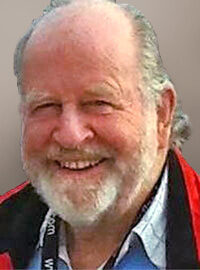
Part 72
There is something that has puzzled me for many years. It is the way in which we who have had the “privilege” of being born in the Western world have aggressively exported our expertise, technology, and management skills to developing nations. Sadly, along with this priceless information, comes the whole baggage of the ills of the West.
Taking an area that I know something about, Southern Africa, I would like to explore how this has affected the peoples of South Africa, both positively and negatively.
Let me emphasize that I am not an academic, not a well-qualified historian nor even someone involved directly with social issues. However, as a writer and filmmaker for over 60 years, I have observed and often recorded many different levels of society among the African, Asian and the white communities that populate the rich and beautiful land of South Africa.
I’d like to start by outlining the backdrop to this gradual but inevitable coming together of very disparate groups with differing cultures, traditions, and religions.
Although it is understood that the first movement of Africans to the South from Southern West Africa took place in the 3rd century BC, it is not clear when they actually reached South Africa. White historians in the 19th century claimed that land north of the Cape of Good Hope was devoid of inhabitants. It is more likely that the Bantu people journeyed as far as what is now known as the Transkei in the 15th or 16th centuries at the latest.
The Dutch East India Company had major trading depots in Malaysia but, in order to get there, they had to sail around Africa’s Cape of Good Hope. Jan van Reibeck stopped off at the Cape in 1652 on his way to the Indies and decided to make the fertile land a refuelling depot for the Dutch. This soon became a settlement and eventually a colony. The Khoisan people were mostly based to the west of what is now Cape Town, and the Bantu groups were mostly some hundreds of miles to the northeast. This meant that the three groups, Khoisan, Whites and Bantu were not majorly treading on each other’s toes in the 16th and 17th centuries.
However, the nations that suffered most from both Bantu and white migrations were the Khoisan or Hottentots and bushmen who did inhabit much of South Africa before anyone else. These two groups were yellow-skinned rather than black and their earliest origins are uncertain.
Britain briefly occupied the Cape in 1795, then gave it back to the Dutch. Because of conflicts in Europe, sovereignty of the Cape was finally transferred to Britain again in 1814. The numbers of Dutch settlers who remained in the Cape had been inflated by the earlier arrival of French and German Huguenots fleeing from persecution in Europe.
They were assimilated into the Dutch community and, despite keeping their French- or German-sounding names, helped to form what eventually became known as the Afrikaners, with the Afrikaans language recognized in the 1920s. The only memorial in the world to honor a language – Afrikaans – is located outside the town of Paarl in the Cape.

Before then, in 1835, between 12,000 and 14,000 of the Cape Dutch who also became known as the Boers (Dutch for farmers) were fed up with living under restrictive British rule and set off into the hinterland of South Africa on what became known as the Great Trek. They bypassed the Bantu tribe known as the Xhosas who lived on the southeast coast to the north of the Cape and moved into two main central regions of the country where they set up independent republics known as The Orange Free State, and further north, the Transvaal on the far side of the Vaal river.
There were numerous conflicts between black and white settlers but there was no outright war between them. The British had also settled in the Eastern Cape close to the Xhosa lands as well as in Natal to the north, where the port of Durban now stands. The Zulus occupied much of the area known as Natal and some fierce battles ensued but, in the main, it could be said that the Bantu tribes eventually kept their distance from both the British and the Boers for much of the latter part of the 19th century.
However, this all changed when diamonds were discovered in Kimberley in the northern Cape in 1867, followed not long afterwards by the discovery of the world’s largest source of gold in the early days of the 1900s. Greed is a terrible thing. The Boers, many of whose forefathers had been in Africa since the 1500s were outraged that the “Englesman” was stealing the wealth of their land from the ground and taking their proceeds back to Britain.
The various African tribes became involved to the extent that massive labor forces were required both for the mining of diamonds and particularly the deep mining of gold. This was the African’s first close encounter with the whites. For both sides it was not only a problem with communication but with understanding. The whites had the inherently superior attitude that they were dealing with ignorant savages. The blacks, on the other hand, were confronted with ideas and concepts that they had never heard of. Furthermore, the whites in their own stupidity had no concept of what the African did not know simply because many Western ideas and activities had not yet reached Africa. The whites then regarded the blacks as stupid, which was nonsensical. How could someone be expected to turn on a tap, for example, if they had never seen one before?
This fundamental lack of understanding was made even worse by the African tradition of saying “yes” when asked if they understood something. In their minds they were simply saying politely, “Yes, I hear you,” not “Yes, I understand you.” I could write volumes about differences in traditions and culture that widened the gap between their understanding, but I’ll confine it to two simple examples. When a white person considers someone to be their senior or if a woman enters a room, it is ingrained in their nature to stand up as a sign of politeness. However, if an African enters the presence of a senior, they find a way to sit down as fast as possible so that they are in a lower position than their superior.
As another example, if you are a white woman waiting for an elevator with an African man, when the door opens, he will move into the elevator first, which we whites consider to be rude. It is not so in African culture. I imagine that it’s because the man goes first in case of danger from a wild animal but perhaps it’s also because African tribal culture is very patriarchal, and therefore the man goes first.
What I’m trying to say is that the roots of racism have many sources yet so much understanding can be achieved by improving communication. Few people try to achieve this, relying rather on abuse or outright violence. In a way, it reminds me that it’s exactly what we intend to achieve with the ExoBrain – good clean communication, simply and inexpensively transmitted.
In 1880, the Boers rebelled against the rapacious methods of British Colonialism leading to the first brief Anglo-Boer war in 1880 to 1881. The Boers inflicted huge losses on the British troops, using their remarkable skills as marksmen and horsemen against the rigid traditions of the British military.
The second Anglo-Boer war from 1899 to 1902 was triggered by the discovery of gold in the Transvaal and ended more than two years later when the British employed up to 400,000 troops against some thousands of Boer commandos. The British army employed a scorched-earth policy of burning the Boer farms and their crops. They also created the world’s first concentration camps, where Boer women and children were incarcerated. This created a bitter hatred of the imperial British. Thousands of these women and children died from disease in the camps.
After the peace treaty of Vereeniging (a small town in the Transvaal) the war was ended. Some of the hard-line Boers left for other countries, including the US, Patagonia, and Kenya but the remainder bonded together to preserve their identity as a group or nation. They formed a secret association called the Broederbond (bond of brothers) and vowed that they would raise the level of education of the Afrikaner. Before then, as farmers, the majority of the Boers were poorly educated. This call was heeded, and most Afrikaner families made every effort for their children to attend school and go on to university when possible.
This was remarkably successful, and a great number of young Afrikaners became well educated and showed an aptitude for business and for the academic world. Sadly, the introduction of the Apartheid philosophy in 1948 resulted in control of the country by a minority of bitter and resentful politicians. They were still angry with the English and increasingly fearful of the large black majority (a population of 6 million whites and about 35 million blacks). They saw the separation of races as a viable solution to the increasing friction between white and black. Apartheid moved into another gear when the new Prime Minister Hendrik Verwoerd came to power in 1958. Dr. Verwoerd was born in Holland and trained in psychology under Nazi psychiatrists during the 1930s in Germany.
He turned the rather rambling philosophy of Apartheid into a highly organized exercise in social engineering based on German psychiatry and the Nazi concept of Racial Hygiene (the elimination of those unfit for life and the creation of a Master Race). Apartheid did not go as far as the Nazis with their mass sterilizations and eventual murders, but it did make life unbearable for the black population.
Perhaps one of the many lessons from the Apartheid years, which ended in 1994, was that separation of races did not work and it further increased the breakdown of understanding between the two groups. Today’s enforced Covid-19 restrictions and social distancing remind me of the infuriating separateness of the Apartheid years.
Conversely, the lesson learned here is the vital need for good communication to improve unity between people of all races, colors and creeds. A common reality can only be attained with better and more truthful communication. It is for this reason that I have been such a fervent supporter of Peter Warren and his ExoTech system for nearly six years. It represents an opportunity to clean up the flaws in the entire concept of the Internet and provide what computing offered but never delivered, as it falls deeper and deeper into the mire of fake news and false data.
Next week, I want to finalize the story of South Africa from my own personal point of view, as there are many parallels with the unfortunate events that are taking place around the world today.

